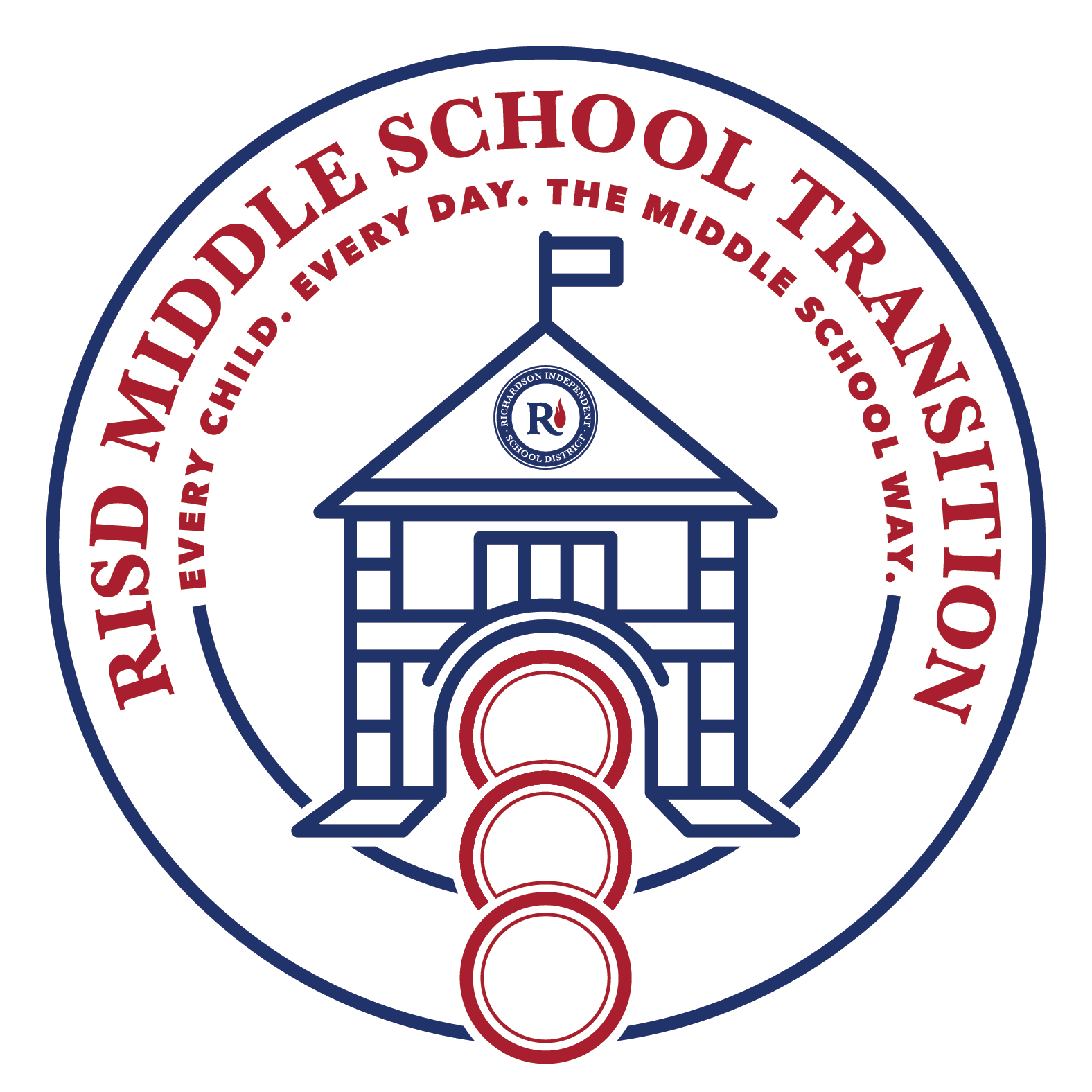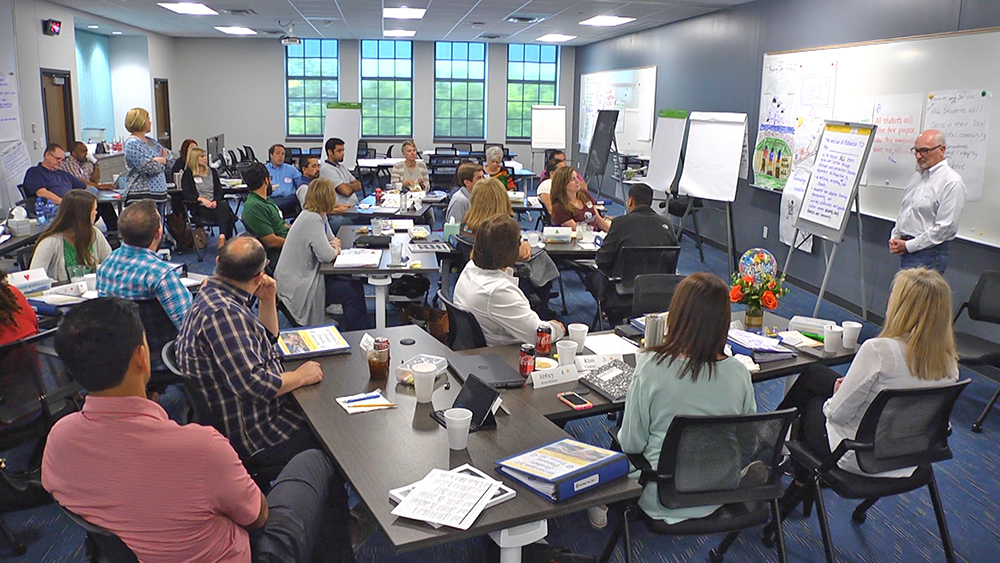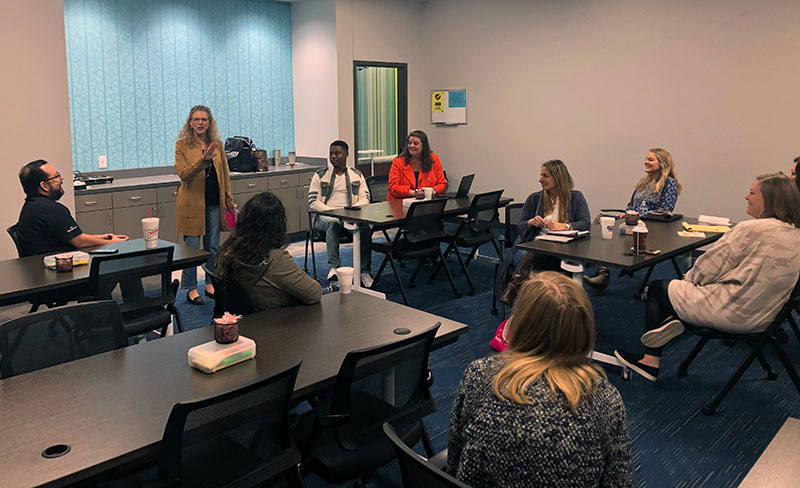Middle School Transition
Overview

The District Grade Configuration Committee was convened to study the possibility of moving sixth grade to junior high campuses and adopting a middle school model in RISD. Over forty participants representing district and campus staff, parents and community members gathered over the course of several months with the purpose of studying the pros and cons of a new middle school model and to make a recommendation to Dr. Stone and the Board of Trustees.
This group was assembled as a result of the district’s Strategic Plan and the Facilities Action Team, which made the recommendation that the district study this idea as a solution to:
- mitigate space concerns at some of our elementary schools,
- provide sixth graders access to wider and advanced academic offerings, extracurricular opportunities in fine arts, athletics and other areas of interest.
First and foremost, the district has studied the possibility of a new middle school model with an emphasis on what is best for students academically.
After study and deliberation, the grade configuration committee recommended to RISD Trustees in 2020 that the district move forward with implementing the middle school model, which trustees adopted as a resolution in 2021. In 2021, RISD voters approved funds for the first phases of middle school transformations in the Lake Highlands learning community, and sixth grade students in Lake Highlands are on schedule to attend Forest Meadow and Lake Highlands middle schools starting in the 2024-2025 school year. RISD intends to place the remaining six junior high to middle school transition projects before voters as part of the next bond cycle.
Alignment with District’s Strategic Plan

Student Learning Design
- Design and implement flexible and inclusive learning environments to ensure ALL student groups maximize their success through evidence-based practices and quality instruction.
- Create, support, and assess personalized learning pathways to maximize student potential and respond to student choice, resulting in mastery-based academic and affective growth, and preparing ALL students for global citizenship.
- Ensure acquisition of workforce credentials aligned with dynamic regional job market demands for success for ALL students post-graduation.
- Establish and implement unique programming to meet the needs of ALL students, including underserved populations such as SES, LEP students, and the highly and profoundly gifted.
Facilities
- Establish a comprehensive campus planning, use, and conditions assessment document and process.
- Develop and implement a process to examine RISD grade configurations (6th grade).
- Establish and maintain a culture of sustainability (ecological responsibility) across all RISD activities,purchasing, and facilities.
- Establish a Safety and Security Department.
- Adopt a neighborhood school policy and create a formal definition of neighborhood school to provide clarity on future decisions regarding school construction, boundary lines, and transfer policies.
What did the Grade Configuration Committee Study?

- Student Academic performance
- Academic Performance/Curriculum
- Student Wellness Considerations
- Athletics & Fine Arts
Academic Performance & Curriculum Considerations
Pros:
- Stronger alignment of TEKS structure
- Currently 95% of districts statewide have 6-8 middle school model
- Support Advanced Learning Opportunities
- Recommendation aligns with state curriculum TEKS that are bundled for Grades 6-8
Cons:
- Research shows that there is the possibility for academic dips in achievement during a transition year. We could see that at the 6th grade level if we moved to this model.
Student Wellness Considerations
Pros:
- Developmentally appropriate for 6th graders to be with 7th and 8th
- Developmental differences from Pre-K to 6th
- Opportunities to develop interests, which is also developmentally appropriate
- Data shows 6th-8th grades together does not negatively impact an already difficult developmental time in a student’s life
- More time to impact student prior to transition to high school
Cons:
- Some parents support keeping their student in an elementary school environment that may protect them emotionally from the teenage years
Athletics & Fine Arts
Pros:
- Equity and equal access for all
- Increased opportunities and choices
- Provides an opportunity and foundation that leads to success
Cons:
- Increased programming will come with more financial needs. That includes equipment, supplies, allocations, and construction for space.
Facilities
Pros:
- Approaching 90% capacity threshold at our campuses
- Facilities support best academic decision for all students
- Opportunity to enhance JHS campuses
- Minimum of five years from any implementation of new recommended model
Cons:
- Construction costs for renovating current Junior High Campuses to accommodate additional grade level
Resources

- Board Adopts the Middle School Transformation Concept
- Bond 2021: Middle School Transformation
- Grade Configuration Committee recommendations to RISD Board (PDF)
- Grade Configuration Committee recommendations to RISD Board (Video)
- The Teen Years Explained (PDF)
- Grade Configuration: Who Goes Where? (PDF)
- Grade Configuration Documents (PDF)
Grade Configuration Committee Recommendation

Specific recommendations for academic programming, staffing and communication plan.

We want to hear from you about this recommendation!
Please access the Middle School Dialogue on our Let’s Talk Platform to share feedback, comments, questions or concerns about this recommendation.